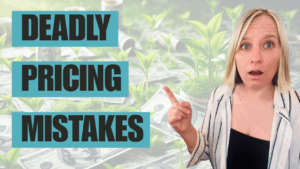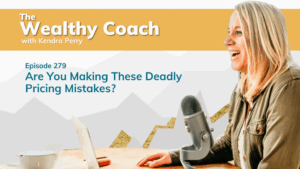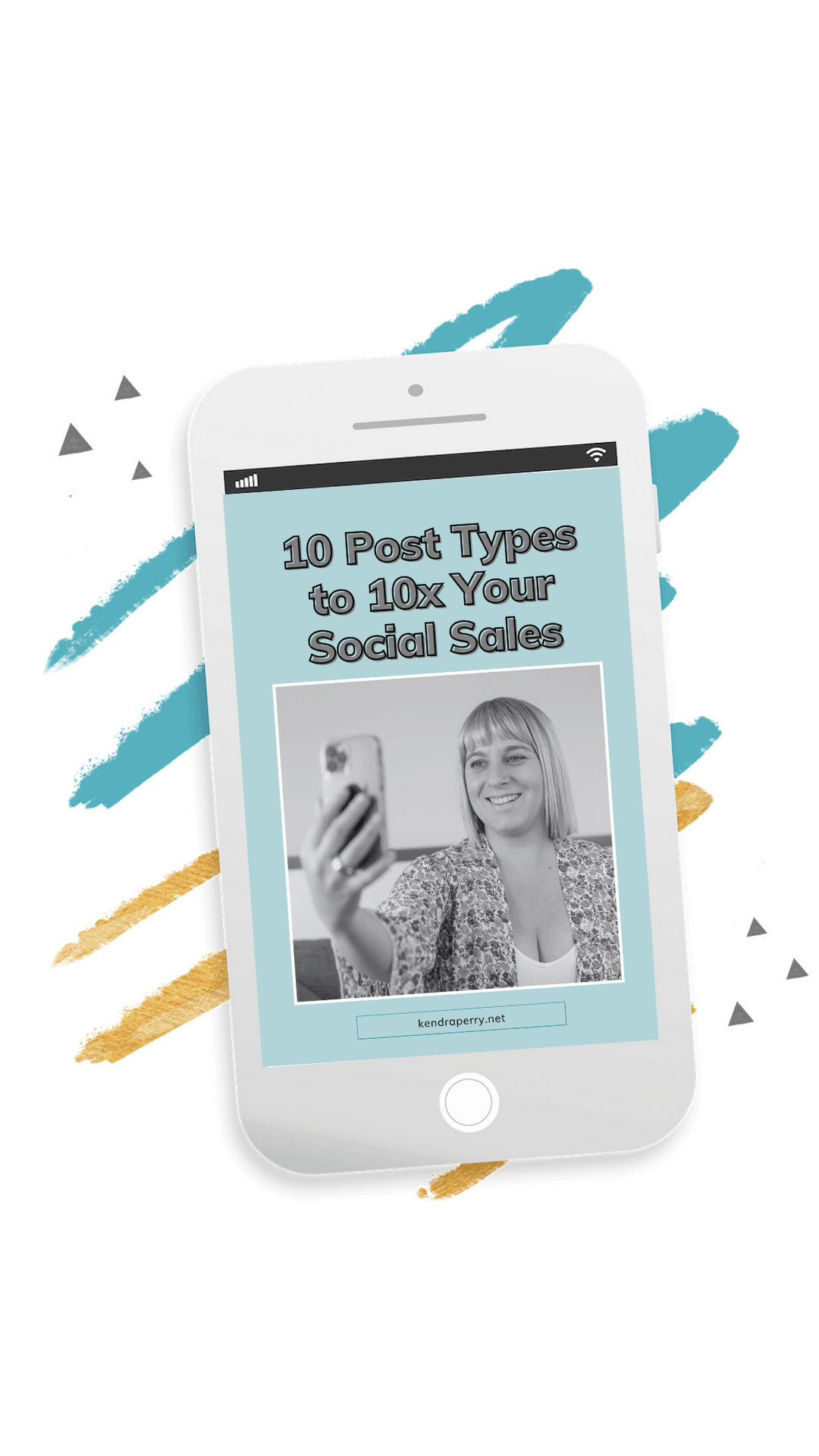In this second episode of the Master Your Marketing Series, Kendra Perry talks about the four different types of organic marketing strategies. She discusses how to execute these in the right way to yield the greatest impact, spending only effort instead of money. Kendra also explains the three different types of audience members, the various types of social media posts, and the three types of emails to send out. She even provides a sneak peek of her new program for higher-level coaches that combines group coaching support and one-on-one sessions.
Apply to Work with Kendra inside the 6-Month Holistic CEO Mastermind: https://kendraperry.net/apply
—
Listen to the podcast here
My Best Organic Marketing Strategies – Master Your Marketing Series # 2
Welcome to episode two of the Master Your Marketing Series. If you missed episode one, I very highly recommend that you go back and read it because we talked about messaging, which is the foundation for everything else we’re going to talk about in this series. It’s the episode before this one. It is called Nail Your Messaging To Dominate Your Marketing. It’s Episode 195. That is episode one of the Master Your Marketing Series.
In this episode, we are going to be talking about how to nail your organic marketing. How do you become a master in organic marketing? What do I mean by organic marketing that we’re all on the same page? Organic marketing is essentially marketing that you don’t pay for. There are a bunch of different types. I’m going to be talking about four different types that are the most relevant to coaches, practitioners, and professionals who are wanting to have online practices and businesses. It is free marketing. It’s very important because, one thing, it’s free.
I have been incredibly successful with organic marketing. There was a good portion of both my businesses. I have definitely dabbled in ads. I run ads, but in my health coaching business and business coaching business, I’ve gone long periods of time without running any paid ads where I’ve made all my sales through organic marketing. I grew to 6 figures with 100% organic marketing. It does work and it’s free. I believe it’s necessary in order to truly build trust with your audience, even with people who might find you through an ad.
Aligning With Paid Marketing
What a lot of people don’t know is that your organic marketing needs to align and work alongside your paid marketing. I’ll give you an example. Let’s say I’m running a Facebook Ad. A lot of times, when people first come across me on an ad and my ad might be promoting a free resource, they need to click over to a landing page and input their name and email to get the free thing. A lot of times, the first time people come across that ad, they are not going to go to the landing page. They’re going to click on the profile and go check me out on social media.
If they’re seeing an ad on Facebook, it’s going to pull people to my Facebook or business profile. If they see that ad on Instagram, they’re going to go check out my Instagram profile. Why do people do this? They’re checking you out. Something about your ad caught their attention, but they don’t know anything about you. They don’t trust you. They’re like, “Let’s check this person out.” They might go check your profile. Let’s say you have content on your Instagram profile that is very different than what’s in the ad or you have poor content on your Instagram feed or maybe you haven’t posted on your Instagram feed in a month. Think about the experience that person is going to have with interacting with your business.
They’re going to think, “This doesn’t make sense. This content doesn’t align. This content is not very good. I don’t trust this person. Is this person even legit? They haven’t posted in a month. Is this business even active? Who is this person?” They’re going to think you’re a scammer. You do need your organic marketing tool line. Just because you’re running ads doesn’t mean that you don’t post on social media. You still post on social media, but when you run paid ads, you don’t have to post as much, which is the beauty of it.

Another thing to consider when it comes to Meta ads, the company that owns both Facebook and Instagram, is they want to see alignment between your ads and your organic content that will help your ads do better. Your ads will do better if you have a good organic marketing strategy. Hopefully, you can see how these two things work.
Regardless, we are all going to do some form of organic marketing. It’s very hard to convert cold traffic that we get through ads. There’s an entirely different strategy that goes into it. Typically, it’s a longer process. We want to make sure we’re nailing our organic marketing because that’s where we can get clients for free. There are many different forms of organic marketing, but I want to talk about four of the most important that I’ve personally had the most success with and I’ve seen the most success with my students.
Social Media Content
1) Social media, 2) Collaborations, 3) Email marketing and 4) SEO. We’re going to dive into all four of those and I’m going to give you a little bit of a strategy for each. I do all four of these. I’m not saying you need to do all four. You should definitely be doing at least 2 or 3 of these. Social media is pretty obvious. A big mistake that a lot of people are making with their social media is there’s not a lot of strategy and the content is focused on education-based content, which, as you were soon going to learn when I give you my content strategy, education is only a small piece of the overall strategy.
You will never have good content on your social media or do well on social media if you don’t have good messaging. If you haven’t read episode one of this series, go back and read that because this is key. As I talked about in that episode, your content has to be specific to your target audience. It needs to be written and delivered that reflects your brand messaging. Within all your content and brand messaging, there needs to be product messaging, which, if you don’t know what I’m talking about, it means you missed episode one. Go back.
This will help you with your social media marketing. At any given time, there are three different types of audience members in your audience. There are three different types of people who are hanging around. Cold, warm, and hot people. What do I mean by this? Cold audience members don’t know you. They’ve literally come across you. They may not even be following yet. They have seen your content a little bit. They’re interested, peaked, but skeptical. Think of how you feel when you come across someone you’ve never seen before and maybe there was something about their content that resonated. You’re checking them out, but you have a skeptical eye. You’re like, “I’m not sure about this person.” Those are your cold leads.
Next are your warm leads. These are people who are following you and they like you. They’re into your stuff. They’re getting to know you. They’re consuming your content and following you. We have hot leads. These are the people who are inquiring about your services. They’re interested. They are potentially even ready to buy. When it comes to coming up with a content strategy, we need to post types of content that serve all three of these types of people.
I want you to think about this because when we think about content and content strategy, we want to think about creating a journey where we are literally moving people through the journey of being cold to warm to hot. That journey is going to take different lengths of time for different people. Someone might be cold and then go into warm and stay in warm for years before they finally inquire to buy. Sometimes people will find you. They’ll resonate with you. They’ll be like, “I love this person,” and they’re suddenly ready to buy and that could happen in a day. The time frames are different for all types of people. It depends on their buying behavior, their personality, the level of their pain, their problem, and all of these things.
I want you to start thinking about this. I want to move people from cold to warm to hot. We’re thinking about cold leads. The people who don’t know you are checking you out, but they’re unsure. They’re skeptical. This is where story content can be powerful. We talked about the brand story in episode one of the series. Go back and read that if you’ve forgotten about that. It is the story of how you became a coach and how you came to be where you are now. There are other different stories that you can tell. This is something that I teach my HCA students. This is to create various different stories that convey different lessons. I like to tell a lot of stories.
Something I want you to keep in mind is relevancy. Any story you tell has to have relevancy for your audience. There’s no point in telling a story that is completely irrelevant to your audience. The way that you can make a story relevant is by seeing if that story can convey a lesson. For example, I could tell the story of the fact that my cat didn’t come home and I was super stressed out. That’s not that relevant. Why would you care about my cat not coming home? We’re not here to talk about cats. This is not a cat channel, but if I could find a lesson in that story that I could convey to you and use that story to deliver it, then that would create relevancy.

For example, I could compare my cat not coming home for five hours and how the time dragged on, how it was stressed out, and how I was worried. I could compare that to you waiting for your business to grow. Do you see what I did there? I hope so. Essentially, I’ve taken something, a story, and then I found a lesson in it that relates to you, the online business owner, and that has created relevancy. People connect to stories. If you can focus on speaking to the emotion that you felt during a story, in this example, talking about my cat, I could say, “I felt hopeless, anxious, and sad. I felt like she was never going to come home and I was going to be without a cat.”
I could speak to that. You might not even like cats, you might not have a cat, and you may never have had the experience of your cat not coming home, but what you would connect to in that story is what I felt. It would be the emotions of waiting because, likely, you’ve experienced someone being late or not coming home and then going through the worry of, “Has something bad happened?”
People will connect to the emotions. For cold leads, story content is valuable. Think of different experiences you’ve had in your life, with your health and growing your business. That would be helpful for your audience to know because maybe there’s a lesson in it. What might be helpful in this situation is to think about various lessons that your people would benefit from or need to learn and then try to think of a story or situation in your life to convey that lesson.
Another type of post for cold leads is what I call My Philosophy Post. My Philosophy means that you’re talking about how you do things differently. It’s essentially the philosophy that you teach or the way in which you look at things. This is a good hook for cold leads because what they’ll see is, “This isn’t just standard this. This doesn’t is what I thought it was. This is something different.” That can hook them in. Story and My Philosophy Post are good for cold leads.
For warm leads, there are three types of content that we want to focus on, education, connection, and something I call belief disrupting. Education is the type of content that most coaches are focusing on. This is the how-to content, “How to do this? How to do that? Five steps to get this.” While that type of content is part of an overall strategy, hopefully, you can see now that it’s one piece of it. If we focus too much on that, then we’re going to struggle to have good content marketing and we’re going to struggle to get clients.
These would be the, “Five steps to get this. Three reasons this isn’t happening. How to do this and that?” That would be that type of content. There’s another piece of this, which is the connection content. This is an interesting piece of content, but it’s powerful. Connection content is not necessarily niche-specific, but there’s relevancy and there’s a connection on common values. When we talked about brand messaging in episode one of the series, we talked about your values and determining what your audience’s values are and what your values are.
You want to try to figure out what values you share in common with your audience. As an example, me and you, we share health as a common value. That’s something I know about you because your health practitioner or you’re into personal development and we share this value of health. What does health have to do with running your business? Not a whole lot. This isn’t a health channel, but sometimes I share content that speaks to my journey with my health and things that I’m doing for my health. I share this in my stories. I also share this in my feed. Sometimes, I do podcast episodes where I update people on my health.
Why do I do this? It’s to create a connection based on a common value. When we talked about brand messaging in episode one, people have to feel a connection to you. They need to vibe with you. We want to intentionally create content that drives connection. This means that you need to understand your target audience and yourself. What are those common values that you and your audience share? Maybe it’s freedom, family, connection, or adventure. Who knows what it is? I know me and my audience share freedom, medical autonomy, and health. We share those things and those are things that I will sometimes speak to.
For example, one time, I did a post. I did this frog medicine journey. It’s called Kambo. I did three different Kambo ceremonies where I took this frog medicine. It completely changed my life. It was amazing. I shared that journey on social media and also on the podcast. People loved it. Kambo has nothing to do with business, but there’s a common value there. What is it? It’s personal development. It’s inner work. I know you. You’re out there trying to better yourself, whether it’s through something like frog or plant medicine, biohacking, eating healthy food, or whatever. It was a popular post. It doesn’t educate or teach you about business, but it helps drive a connection with me.
The third type of content for your warm leads is called belief disrupting. This is important. This is where you bust common myths, industry myths, and limiting beliefs. I want you to brainstorm all kinds of myths within your industry, and when I say industry, I mean your niche, that people believe that you think are crap. What are those things? One for me is passive income. I’m often debunking passive income and poo-pooing it because a lot of people are out there saying, “You turn on this funnel. You’re going to make $100,000 a month while you’re at the beach.” Honestly, it doesn’t work like that. That is an industry myth that I bust often.
What would that be in your industry? For example, if you are in the weight loss industry. Maybe one of those myths is the only way to lose weight. You need to eat less and exercise more. If you think that’s crap, then that is a great piece of content. We want to basically shift people’s perspective. We want to shift paradigms. That’s what we’re doing with belief-disrupting content.
Next, we move into hot leads. These are things like future pacing, objection handling, calls to action, offer posts, and social proof. I want to make it clear that social proof is important for all types of leads, testimonials, and screenshots of comments in your Facebook group where you identify information. Anything that can speak to your ability as a coach or practitioner and the successes that you have, you need to be posting these constantly. Post social proof multiple times a week.
Future pacing means putting people in the dream. It is writing posts where you essentially are imagining what it could look like when you’ve solved your problem. Obviously, the call to action at the end of the post is going to be your program. We want a future-pace people. We also want to handle objections. I call this preventative objection handling. What are the objections that people are going to have to sign up for your program? What are those going to be?
We can address those in advance with our content so by the time they get to our sales page or a sales call with us, that objection has already been addressed. We need to do called action. We need to tell people how to sign up. Tell them about our program. Offer post. Talk about our program. They promote our program directly. This is important because sometimes we have a lot of hot leads in our audience, but if we don’t do enough hot lead posts, then people don’t know you have a program. They want to work with you, but they don’t know how. That’s a problem. My advice is to post at least one of these types of content one for cold, warm, and hot, every week.
Business Collaboration
That is a great content strategy. The downside to social media marketing in 2023 is that it’s increasingly competitive. It’s a lot harder. I am of the belief now that we need some level of paid ads to make things go quicker for us. Next, I want to move into collaborations. Collaboration means creating intentional collaborations with other experts who have similar niches to create a win-win situation where you’re both promoting each other.
It could be you being a guest on a podcast, guest blogging, or doing an Instagram live with somebody else. It could be doing a real together, a story takeover, or something like that. The reason why this is beneficial is because it helps expose you to people and audiences that you wouldn’t otherwise have access to. That’s amazing. Because somebody is promoting you, you get this automatic street credit or trust.
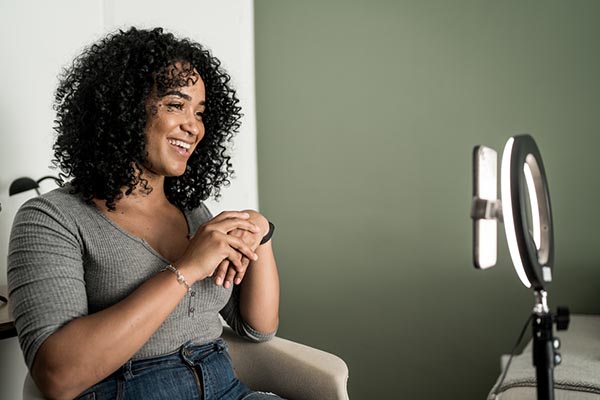
For example, if I brought someone on my show and you’ve been a reader for a long time, you’re probably going to think, “If Kendra thinks this person is awesome, then they’re probably awesome.” It helps build trust quickly and quicker than something with cold ads or Facebook ads. It’s something where you’re targeting cold traffic, and that relationship can take time to build. If I’m vouching for someone, if I’m bringing on my friend Natalie to talk about public relations, that’s amazing. You’re like, “Natalie must be legit.” You get this automatic trust or street cred and it can open you up to a big range of people to pay for that would cost you a lot of money and, through social media, would take you a long time to access.
Part of your organic marketing strategy should be to pitch some collaboration. This can be podcasting, online summits, guest blogging, or reaching out to other practitioners and coaches who have similar niches and see what you can do together. This used to be a big part of my strategy. It’s less part of my strategy these days, but when I did this, I was trying to pitch 4 to 8 podcasts a month.
You want to be intentional. This comes down to knowing your target audience. If you can remember the customer exercise we did together in the first episode, we determined the ecosystem. These are the podcasts that they’re listening to, the blogs that they’re reading, and the magazines that they’re consuming.
We want to know where they hang out because there is no point in being on a podcast that doesn’t serve your audience. For example, let’s say you help new moms with postpartum depression. Does that mean that you’re looking for podcasts that are specific to postpartum depression? Yes, but it also means that we want to be on whatever podcasts new moms would listen to, even if it’s not specific to health because this is a common problem for new moms. Maybe they’re listening to a podcast about being a better mom and you can get on that podcast to speak about postpartum depression. Everyone in your audience or their audience won’t have postpartum depression, but there’s probably a good amount who do.
My best advice for when you’re pitching is you want to tell the host what’s in it for them. How can you serve your audience? How is this going to benefit their audience? Speak about that more and speak about yourself less. The other thing I want to say is don’t get discouraged. You’re always going to get more noes than yeses. Sometimes, we may not hear back for a long time. There were a couple of situations where I pitched podcasts. I didn’t hear back and, literally, half a year or months passed, suddenly, the person reached out to me. The work you put in for this now can serve you in the future. This is a very awesome strategy and a good way to grow your audience.

Email Marketing
Next is email marketing. It is non-negotiable. Social media and email marketing are non-negotiable. You always have to focus on email marketing and social media and then add in collaborations or SEO, but you don’t need to do all four. Email marketing is critical because social media, we don’t own it. The algorithm, we’re never going to beat it. Typically, only 1% to 2% of our followers see our content. It’s hard to follow up with people versus email marketing. You could get a 50% open rate where 50% of your email list is opening and seeing your emails. In my opinion, that’s way better than 1% to 2%. Social media goes down. You can get your account disabled and hacked. There are many different ways you can lose your account. You do own your email list.
In this day and age, the majority of my sales are coming from my email list, even when I do a live event. I did a free challenge. That was a marketing strategy that I used to sell, but all of the sales came from the email follow-up. I made a small handful through the challenge, through the live pitch that I did on the challenge, but the great majority of my sales came from the email follow-up. If I want to make sales, I simply send an email. That’s what I want for you. This is going to be valuable. Get your pen and paper out. I’m going to let you in on my three email nurture strategy that is working for me to build relationships with my niche or list.
I send out three emails a week. You don’t have to send out three emails a week. You could do one weekly. I recommend sending out three emails and then repeating them. Go through each one and then repeat, whether you do it once, twice, or three times a week. The first email that I send out I call a value-based email. Sometimes, this is an educational type of email where I’m teaching you how to do something. Sometimes, it’s belief disrupting. It’s something that provides my email list with value.
The next one is a case study. I sent out a case study of one of my students. We basically go through where they were at when they came into Health Coach Accelerator, the different things that we did, and the outcome that they ultimately got, which would be having their first $10,000 month, getting their first client, launching their group program or signing three clients, whatever it is and I try to back it up with screenshots from the Facebook group and quotes that I have from them.
These are the emails that we get the most engagement from and that we get the most responses to. We get a lot of interest in my program through these types of emails. The third one I do is a frequently asked question email. I pull a common question that I get from my Facebook group or something that people ask me on Instagram and I answer in the email. It’s very simple, but it does work because you’ll notice that we’re focusing on value first. We’re showing evidence or proof that our program works. We’re answering the most frequently asked questions. That’s the three email nurture strategy that I’ve been doing lately, and it’s working for me.
Search Engine Optimization
Finally, I want to talk about search engine optimization. I want to be fully transparent. I am not an expert in SEO. I do SEO, but I don’t do it for myself. Search engine optimization essentially means that you are optimizing content so that it can be found in Google or YouTube searches. You would only need this if you had a website. You only need a website if you are someone who is going to do blogging if you love writing articles and you want that to be a big part of your organic marketing or, like me, you have a podcast.
We take my podcast episodes, transcribe them, and turn them into blog posts. That drives traffic to the website. Other than that, if you hate writing blogs, you don’t want to write articles, you’re not a writer and a podcaster at this point, then you don’t need a website. What I will say is what you do want to get set up is a Facebook business page because that is searchable. That can be found in the search. The great thing about SEO is it essentially gives you traffic while you sleep. There are some downsides in SEO. Seo is not an instant strategy. It takes time. It usually takes at least six months, if not a year, to start working. It needs to be consistently worked on over time.

I have Mano. He’s been working with me for a very long time. He lives overseas. He’s in India. He is doing probably about ten hours a week of SEO on my site. I can’t tell you exactly what he’s doing, but he’s submitting different things to search engines, inputting Meta tags, and all this back-end data. Everything he’s doing is helping my content be seen by more people and rank higher on Google.
When I started with him, one of the keywords that I wanted to rank for was Business Coach For Health Coaches. I was ranking on page 100 or something like that. I am now ranking on page twelve. My goal is to get to page one. We’ve been doing this for a few years now. It does take time, but at some point, I am going to be on the first or second page and people are going to find me that way. You can also find different keywords to do blog posts on and then embed them in your blog post. It can be opt-in forms that are relevant where you offer people a freebie that’s relevant to the post. You can talk about your offer and drive people to your social media.
This is an effective strategy. You do need a website and it does make sense for everyone to have a website. If you are new, I don’t recommend the strategy. If you are at the 10,000 mark and beyond, I would find a way to get content on your website. If you have a podcast, this is an easy way to do this, or you can do blogging and you can use the help of ChatGPT to help you write blog posts. You can use something like Google Keywords to find what keywords are ranking and what people are searching for, create a blog post around it, and get someone to SEO it for you.
You can get SEO help very inexpensively. For $10 an hour, you can have someone doing SEO on your website so you don’t have to think about it. Even if they’re doing a few hours a week, that can be helpful in helping you be seen organically through search. To quickly summarize our organic marketing strategies, we have organic social media, collaborations, email marketing, and search engine optimization. Social media and email marketing are non-negotiables. Know that if you’re running paid ads, you don’t need to post on social media as much and you want to add in one of the either collaborations or SEO and you can do all four.
New Program For Higher Level Coaches
I have something that I want to tell you about. I talked about this a little bit in episode one of the series. I am launching a new program for higher-level coaches. It is going to be a mini mastermind program that is going to take place over six months. It’s going to be a combination of group coaching, support, and one-on-one. One-on-one is not something I’ve offered since 2019. It is a big deal. In order to qualify for this program, you do need to be making at least $5,000 a month consistently. You need to have the goal of growing to multiple six figures and beyond.
Maybe you’re doing $5,000, $10,000, or even $20,000 a month and you want to grow to $30,000, $40,000, or $50,000 a month and beyond. This is what the program’s going to help you do. It’s going to be custom-tailored to you and your business, what you need, and ultimately, what your goals are. When you come into the program, I’m going to do a full audit. We’re going to come up with a strategy for you to execute over the six-month program. What I will be teaching in that program will very much be specific to the people who are in it.
This is going to be very small and intimate. We are taking a very small group of people for this first round. For the first five people who join, they will get founding member pricing. The deadline for that is November 15, 2023. If you are interested in doing this program with me starting in January 2024, and I’m very excited about this, you can apply by going to KendraPerry.net/apply. If you are a good fit for the program, I will reach out to you within a few days. We will have a chat and see if it feels like a fit for both of us.
I am excited about doing this series and, for day three, we are going to talk about paid marketing. We’re going to be talking about ads. It’s one of my favorite topics. If you know anyone who you think would benefit from this series, you can send them to GoKendraPerry.net/PodcastSeries. We’re going to have every episode for the series on this landing page so that you don’t have to search and find them. Have a great day. I will see you in episode three of the series.

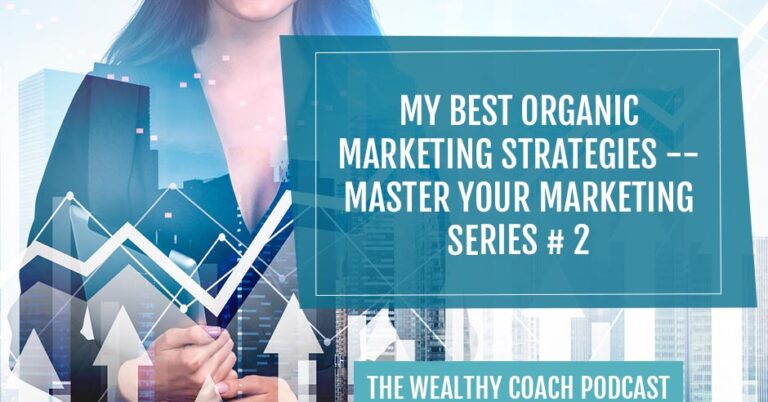
![[BEST OF] A Cautionary Tale About Your Niche](https://kendraperry.net/wp-content/uploads/2025/05/BEST-OF-A-Cautionary-Tale-About-Your-Niche-300x169.png)
